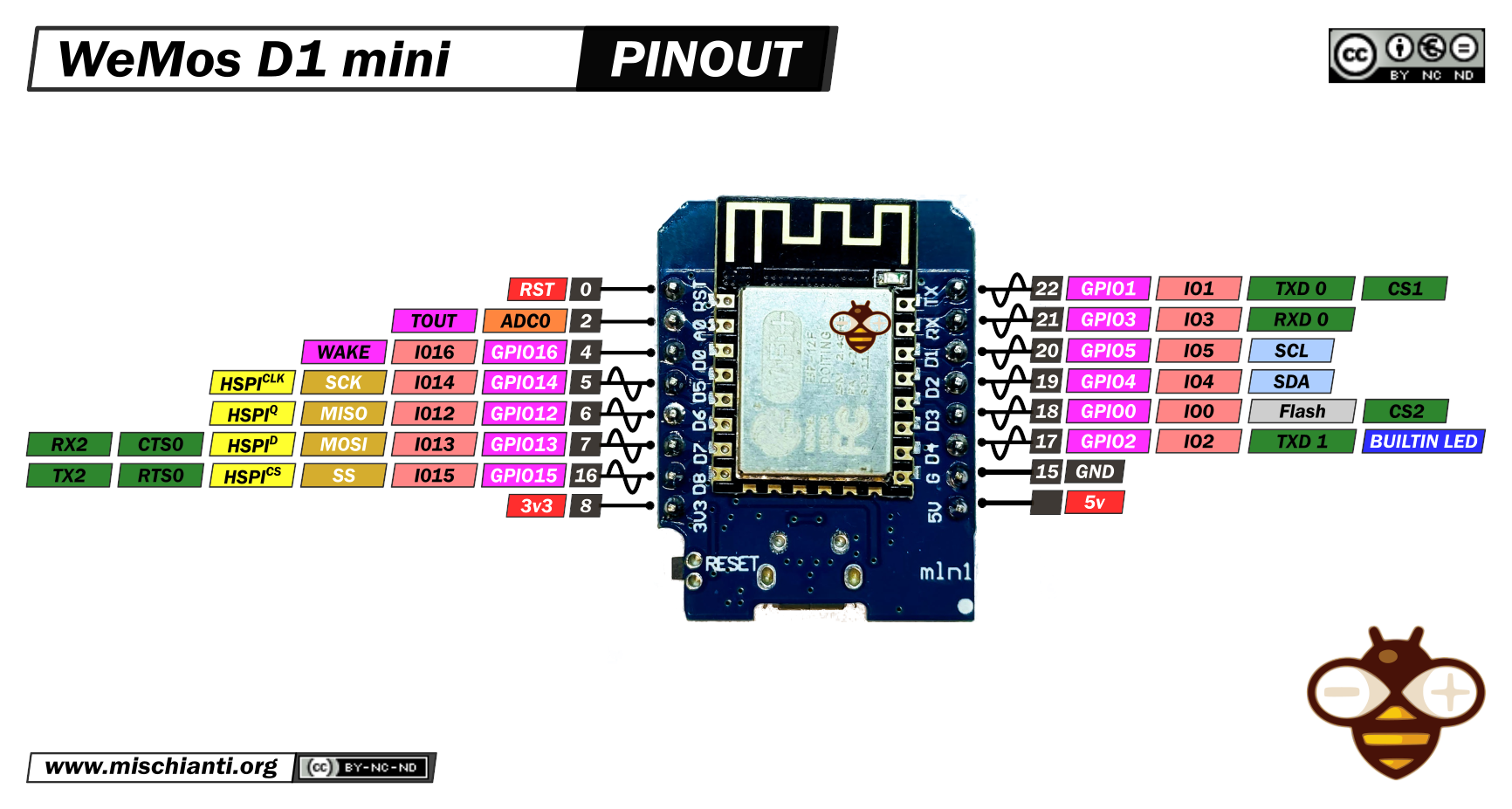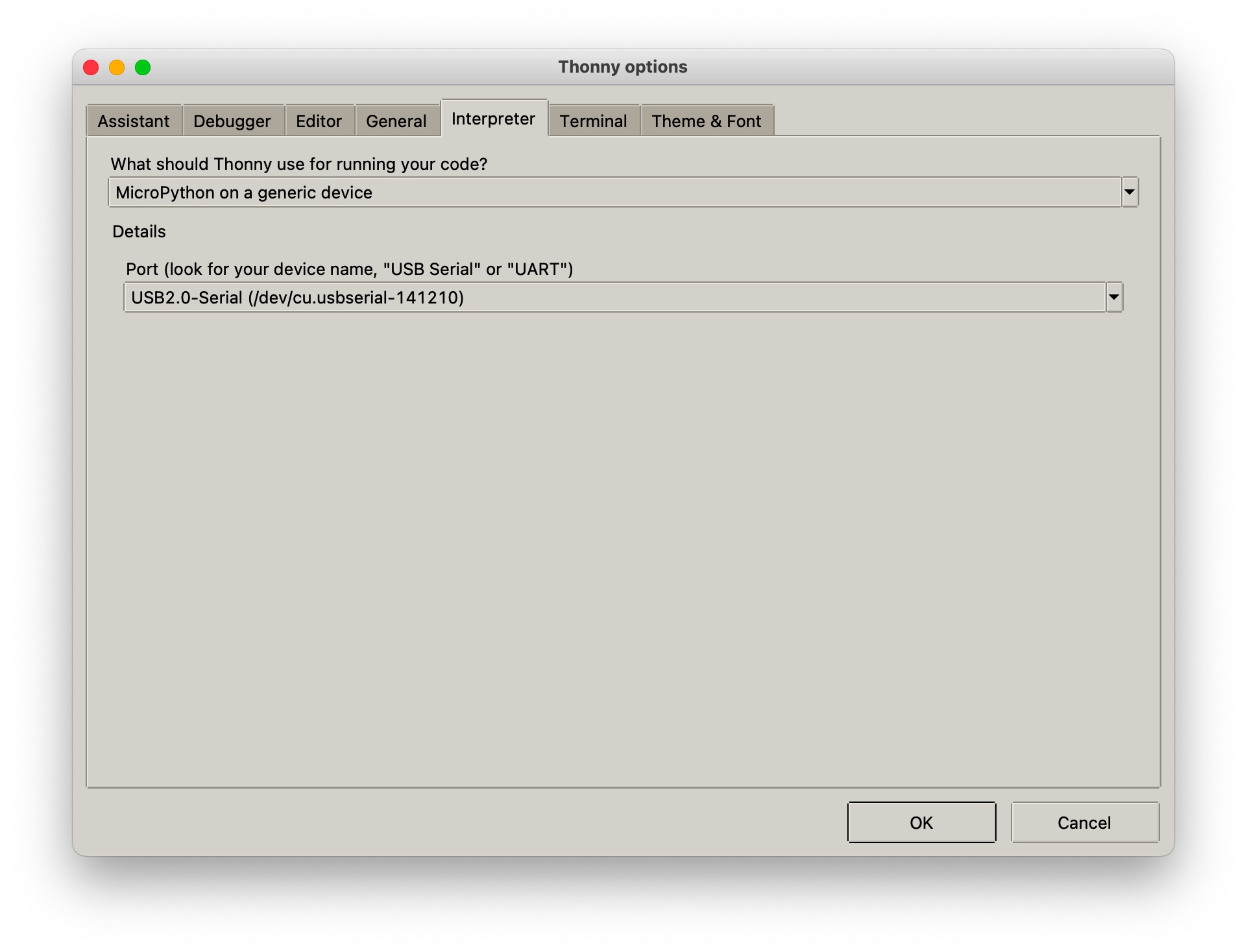Week 8 - Embedded Programming¶
Group Assignment¶
- Compare the performance and development workflows for other architectures
This week we test another D1 mini module which is ESP8266 microcontroller based.
D1 mini pinout¶

Programming environment setup¶
Instead of Arduino (C/C++ based), we can use Python to program D1 mini board. And Thonny is a simple develope environment for beginners. You can download Thonny here.
.dmgfor Mac.exefor Windows
Next we need a driver for connecting D1 mini and Thonny. There’s a CH340C chip on the back side of D1 mini, which is a USB bus conversion chip, it can realize USB to UART interface or USB to printer interface. reference
We downloaded the driver and installed it.
CH341SER_MAC.ZIPfor MacCH341SER.EXEfor Windows
Lastly connect D1 mini to computer using USB cable, and then open Thonny, click Tools > Options... and change interpreter base on the USB port you are using, also choose MicroPython because this is a simplified Python version that suitable to run in small memory environment.

If “MicroPython” shows in Shell, it works. If not, just check your connecting and restart as instructions in red words.

Project: RFID snesing¶
The goal is to create a RFID reading device that light up LED when reading card ID and print it out.
Item list: D1 mini (and usb wires), RGB module, RFID modeule (and RFID kits), breadboard, dupont wires
Source of code and library: Flag technology folder
First we need a library of RFID sensing module, and you can find mfrc522.py inside the folder or below. Next open it in Thonny and click Device > Upload current scrip with current nameif seeing message without error and it works.

And then run Lab07.py. Wiring shown as below.

Now you can use RFID card, token or Easycard to test, once success the shell will print out each unique ID.
Note: when trying to test it above my laptop, RFID sensing doesn’t work. I guess maybe the laptop also genrates some signal that disturbs RFID sensing.
Code¶
from machine import Pin
import mfrc522, time
rfid = mfrc522.MFRC522(0, 2, 4, 5, 14)
led = Pin(15, Pin.OUT)
while True:
led.value(0) # turn off LED brfore searching
stat, tag_type = rfid.request(rfid.REQIDL) # Searching for RFID
if stat == rfid.OK: # find RFID
stat, raw_uid = rfid.anticoll() # Read ID
if stat == rfid.OK:
led.value(1) # light up LED after reading ID
# Transfer ID string from Binary Number to Hexadecimal
id = "%02x%02x%02x%02x" % (raw_uid[0], raw_uid[1],
raw_uid[2], raw_uid[3])
print("Read ID:", id)
time.sleep(0.5) # pause LED for a while to see it clear